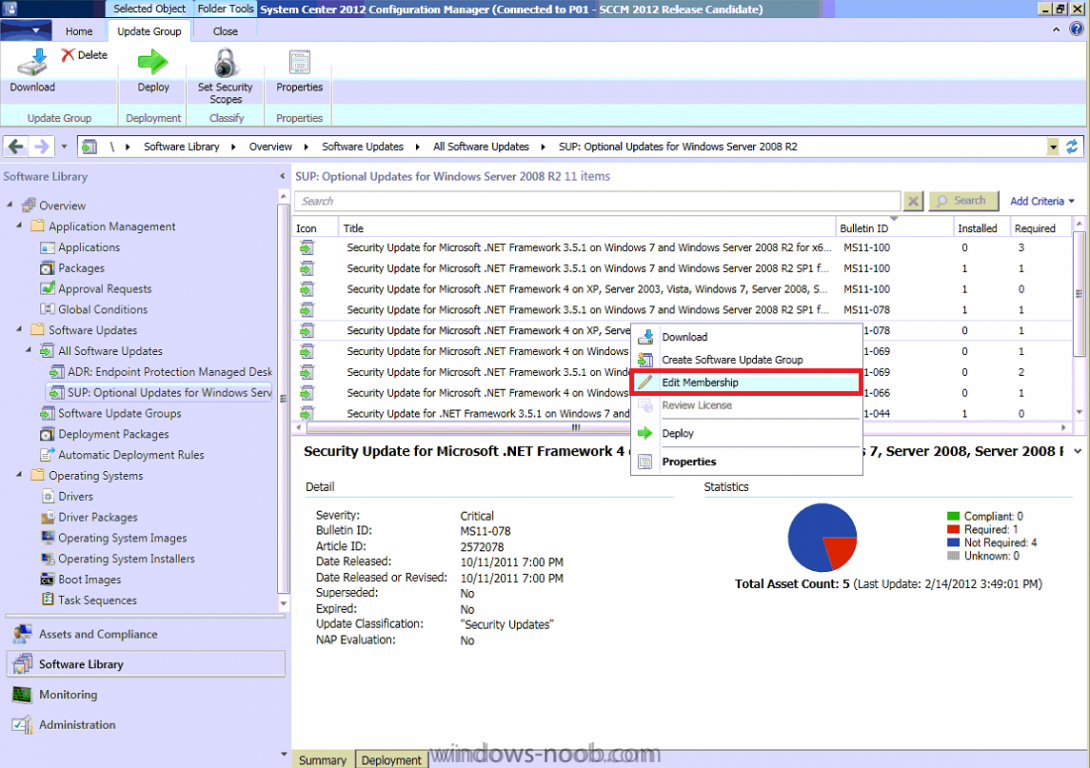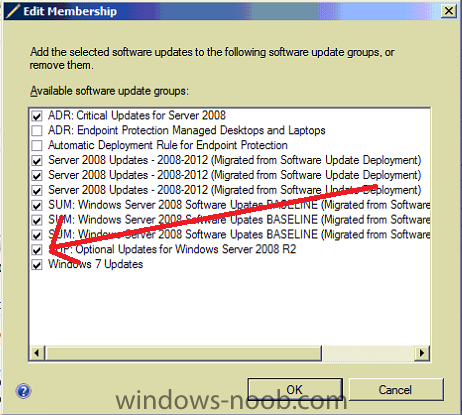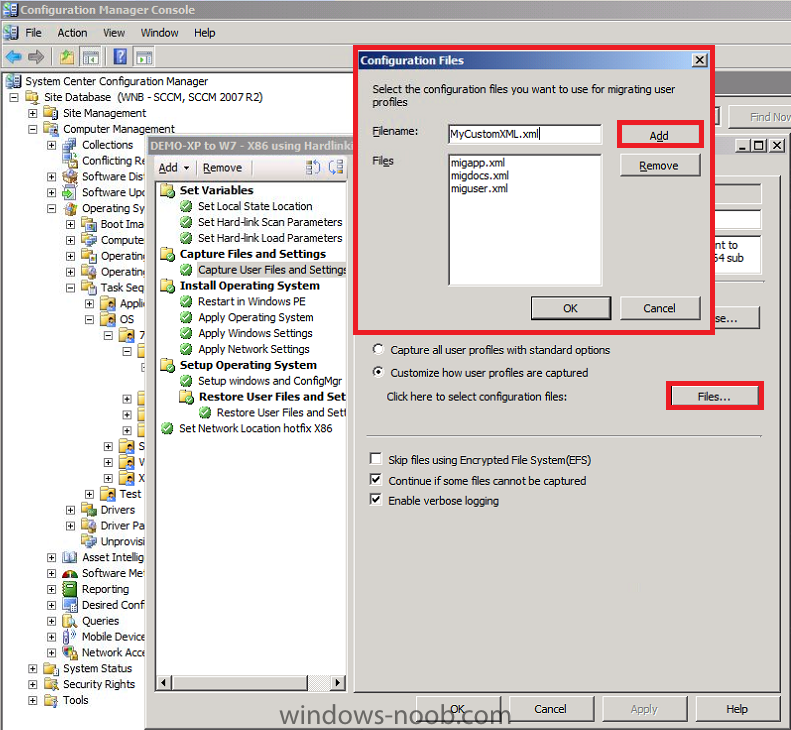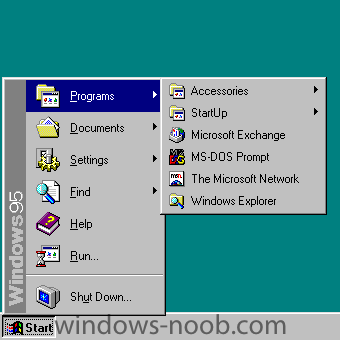-
Posts
9249 -
Joined
-
Last visited
-
Days Won
369
Everything posted by anyweb
-

Task sequence variable for applying language packs
anyweb replied to TSuser's question in Zero Touch/ZTI, Lite Touch/LTi
have you seen my post here ? http://www.windows-noob.com/forums/index.php?/topic/3251-customising-windows-7-deployments-part-4/ -

using SCCM 2012 in a LAB - Part 2. Add SUP and WDS
anyweb replied to anyweb's topic in Configuration Manager 2012
go ahead and try, and report back your findings here. -

using SCCM 2012 in a LAB - Part 2. Add SUP and WDS
anyweb replied to anyweb's topic in Configuration Manager 2012
you could try programming it but why bother, the supported method of migrating from SMS 2003 to Configuration Manager 2012 is to migrate from SMS 2003 > ConfigMgr 2007 and then do a side-by-side migration to ConfigMgr 2012. -
well all the R3 powermanagement features in ConfigMgr 2007 are present in ConfigMgr 2012, have you looked into collection properties theres a Power Management tab, you can select a power management scheme and customise it to turn off things after certain time limits
- 3 replies
-
- Power Off
- Energy Management
-
(and 1 more)
Tagged with:
-
have you tried using the build and capture task sequence method ? i detail it here in this powerpoint (look at the slide notes), here's the build and capture method in detail Using SCCM 2007 Sp2 to deploy Windows 7 Deploy 7 (4 parts)
-
hi have you added any filenames to Software Metering, browse to one of the EXE's for an Adobe product, if you want to meter a specific version then add it there ?
-
what are you trying to deploy exactly ?
-
yes you will have problems unless you are a Microsoft TAP customer, you should not install RC2 into production otherwise, it's not supported to upgrade it at all. So you'll have to install again from scratch when the final code is available (RTM).
-

Lab Part 6 Deploying Software Updates
anyweb replied to bwherry1721's topic in Configuration Manager 2012
to remove an update or updates from a software Update Group, you need to select your software update group and right click on an update that you want to remove, select Edit Membership if the update(s) is/are in one or more software update groups then they will be listed here, simply remove the checkmark(s) from the software update group(s) that you want to delete the update from -
did you verify what the possible causes were ?, for example the firewall settings ?
-

Software deployment issue.
anyweb replied to maniakmyke's question in Deploy software, applications and drivers
did you create a new package from definition for the configmgr client / are you looking in control panel for the client ? why do you think the client didn't install ? what does ccmsetup.log say ? -
that means unsupported, so you are doing something in windows that should be done in winpe or vice versa, i'll take a look at the log to confirm...i had a quick look at your log and didn't see any reference to the 0000032 failure, can you double check there's no more smsts*.log files ?
-
copy it to the usmt folder(s) give it a name like MyCustomXml.xml and redistribute your USMT package to your distribution points. Once done add the file to your Capture User Files and Settings step by selecting Customize how user profiles are captured. Click on Files and add the filename you specified.
-
add a custom XML file with exclusions like this one <!-- This component migrates Common Exclusions--> <component type="Documents" context="System"> <displayName _locID="miguser.userdata">Common Exclusions</displayName> <role role="Data"> <rules> <unconditionalExclude> <objectSet> <script>MigXmlHelper.GenerateDrivePatterns ("\Winnt\* [*]", "Fixed")</script> <script>MigXmlHelper.GenerateDrivePatterns ("\Windows\* [*]", "Fixed")</script> <pattern type="File">%CSIDL_WINDOWS%\* [*]</pattern> <pattern type="File">C:\MININT\*[*]</pattern> <pattern type="File">D:\* [*]</pattern> <pattern type="File">E:\* [*]</pattern> <pattern type="File">F:\* [*]</pattern> <pattern type="File">G:\* [*]</pattern> <pattern type="File">H:\* [*]</pattern> <pattern type="File">I:\* [*]</pattern> <pattern type="File">J:\* [*]</pattern> <pattern type="File">K:\* [*]</pattern> <pattern type="File">L:\* [*]</pattern> <pattern type="File">M:\* [*]</pattern> <pattern type="File">N:\* [*]</pattern> <pattern type="File">O:\* [*]</pattern> <pattern type="File">P:\* [*]</pattern> <pattern type="File">Q:\* [*]</pattern> <pattern type="File">R:\* [*]</pattern> <pattern type="File">S:\* [*]</pattern> <pattern type="File">T:\* [*]</pattern> <pattern type="File">U:\* [*]</pattern> <pattern type="File">V:\* [*]</pattern> <pattern type="File">W:\* [*]</pattern> <pattern type="File">X:\* [*]</pattern> <pattern type="File">Y:\* [*]</pattern> <pattern type="File">Z:\* [*]</pattern> </objectSet> </unconditionalExclude> </rules> </role> </component>
-
is DNS working ?
-
search for smsts*.log
-

using SCCM 2012 in a LAB - Part 1. Installation
anyweb replied to anyweb's topic in Configuration Manager 2012
that's RC2 specific, just accept those three license agreements and continue -
For all intents and purposes, this is only a minor change, and were this any other operating system or graphical environment, it would never warrant an entire news item. However, we're talking Windows, the most popular desktop operating system of all time, here. After 17 years of trusty service, Microsoft has removed the Start button from the taskbar in the upcoming Consumer Preview release of Windows 8. When Windows 95 was launched, one of its most important changes over Windows 3.11 and earlier versions was the inclusion of an entirely new graphical user interface. At the very heart of this interface and was the Start menu and the button that activated it. In the Windows 8 Consumer Preview, to be released at any moment now, the Start button is gone. The Consumer Preview has already been leaked all over the web, and it has been confirmed that it no longer contains the Start button (or orb, since Vista) or the Start menu. This is actually not all that surprising, considering the start menu's functionality had already been reduced severely in previous beta releases. Now, it's gone completely, with the Windows 7 taskbar in Windows 8's desktop mode now acting solely as a taskbar. The Verge has confirmed with its sources at Microsoft that the start button has been replaced by a hot corner (for mouse operation) and a gesture (for touch) which essentially serve as a means to switch between the Metro interface and the traditional desktop. On mouse activation, a thumbnail will appear of the mode you're switching to (Metro or desktop). The decision is supposedly not entirely final, and there's a minute chance that, given enough feedback, the button might return. Still, everything is pointing towards the full death of the Start menu and button. Let's face it - 17 years of service is an eternity in the computer world, and in all honesty, I do feel somewhat sad for its demise. For many, it's a cornerstone of computing, and now it's gone. We need to come up with a new "press start to shut down" joke. via > http://www.osnews.com/story/25581/Microsoft_Removes_Start_Menu_Button_from_Windows_8
-

how can I create the System Management Container in Active Directory
anyweb replied to anyweb's question in Active Directory
well in both cases it's not an Error it's a warning, and you can always continue with warnings but not with Errors, good point though and good to see Microsoft is listening to bugs/dcr's filed and acting on them.






